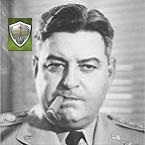Curtis Lemay
Posts: 12969
Joined: 9/17/2004
From: Houston, TX
Status: offline

|
The following link is to one of Dr. Niklas Zetterling’s research files for his “Normandy 1944” book:
http://home.swipnet.se/normandy/gerob/othghq/3flak.html
(I used his site extensively in the design of my “France 1944” scenario.)
It gives great detail about that unit’s experience in Normandy. He also uses those details to reach conclusions about the 88mm Flak gun that echo what I’ve been saying all along.
He starts with an examination of the unit’s primary role in Normandy:
“It is common to emphasize the anti-tank role of the 8,8 cm Flak gun. However, this seems not to be consistent with the employement of the III. Flak-Korps.2 The major reason for this is that the 8,8 cm Flak gun was not very suitable for anti-tank missions.”
He then goes on to list the disadvantages that the gun had for the AT role, most of which we have already heard (hard to hide, hard to move, etc.). He then lists the true role of the unit:
“First and foremost, the corps was employed in the air defence role7. This was the main mission and initially it extended from the front to a line from Falaise to Le Beny Bocage8. The second important mission of the corps was to provide indirect fire to support the ground combat units.9 The chief reason for this was the shortage of GHQ artillery. Due to the range of the 8,8 cm guns, this could often be provided from the positions they were to protect from air attack.”
So, not only was it there primarily to provide air defense, but it generally wasn’t even in the frontlines, but directly behind them – close enough, though, to serve as artillery support.
And, on those rare occasions when enemy tanks penetrated far enough to engage the guns, their performance was poor:
“The Flakkampfgruppen were not very successful in combat. The results were not in proportion to the casualties.11 They lost about 35 8,8 cm guns and 70 light Flak guns, while the number of tanks they knocked out were assessed to be twenty.12 ”
Later he surmises why the 88mm had such a reputation as a tank-killer:
“Finally it is worth discussing why the 8,8 cm Flak gun has received such a repution in the history of operation Overlord. In 1940 and 1941, when the German antitank defences mainly consisted of the 3,7 cm AT gun, the 8,8 cm Flak 36 was significantly superior in terms of armour pentration and range. With the introduction of the 7,5 cm Pak 40, the superiority of the 8,8 cm Flak 36 was relatively marginal. However, it seems that the image of the all-pervasive 8,8 cm Flak guns was created in the early years of the war, largely in North Africa. During much of the fighting in North Africa British tank units were equipped with tanks armed with guns that had no HE ammunition. Also the cooperation between British tanks and artillery was often abysmal. In Normandy the behaviour of British forces was quite different however. Hence, the drawbacks of the 8,8 cm Flak gun, described above, were much more pronounced. But still the image of the "88 mm Flak" seem to have been vivid.”
In other words, it was British incompetence in the Desert War – which had been rectified by 1944. He also lists misidentification as another source of its reputation.
In contrast, the air defense role of the unit was much more successful. He lists 462 aircraft shot down. He even accounts how it was subject to much air attack during its move to Normandy. It took quite a bit of damage, yet:
“The march to Normandy did not only result in losses for the corps. It also shot down about 35 air craft during the movement to Normandy.27”
This was despite the fact that the unit did not have SPAAG.
So, to summarize, by 1944, not only were frontline units being augmented with organic 88mm Flak in their TO&E, but entire Corps-sized units were being provided for further augmentation of the front lines as well. This unit contained over 100 88mm Flak guns and received 53 more over the Normandy campaign.
And, by that time, their role was primarily air defense. This was not just because of the severe air threat the Germans were under, but because the guns were just no longer effective in the AT role. The period when they could be used effectively in that role had been due to enemy incompetence, and that was no longer the case.
A note here about Dr. Zetterling: He is renown for exhaustive research of primary documents and uses it to flog lesser historians like Ambrose, Bever, et al. who rely primarily on secondary Allied sources. His (heavily referenced) positions are based upon the official report of the unit on its Normandy experience, the memoirs of the unit’s commander, and the actual combat statistics of the unit in Normandy.
The link is both definitive and conclusive. It supports everything I’ve been saying all along. It should be the end of this discussion.
|
 Printable Version
Printable Version







 Dutch
Dutch New Messages
New Messages No New Messages
No New Messages Hot Topic w/ New Messages
Hot Topic w/ New Messages Hot Topic w/o New Messages
Hot Topic w/o New Messages Locked w/ New Messages
Locked w/ New Messages Locked w/o New Messages
Locked w/o New Messages Post New Thread
Post New Thread